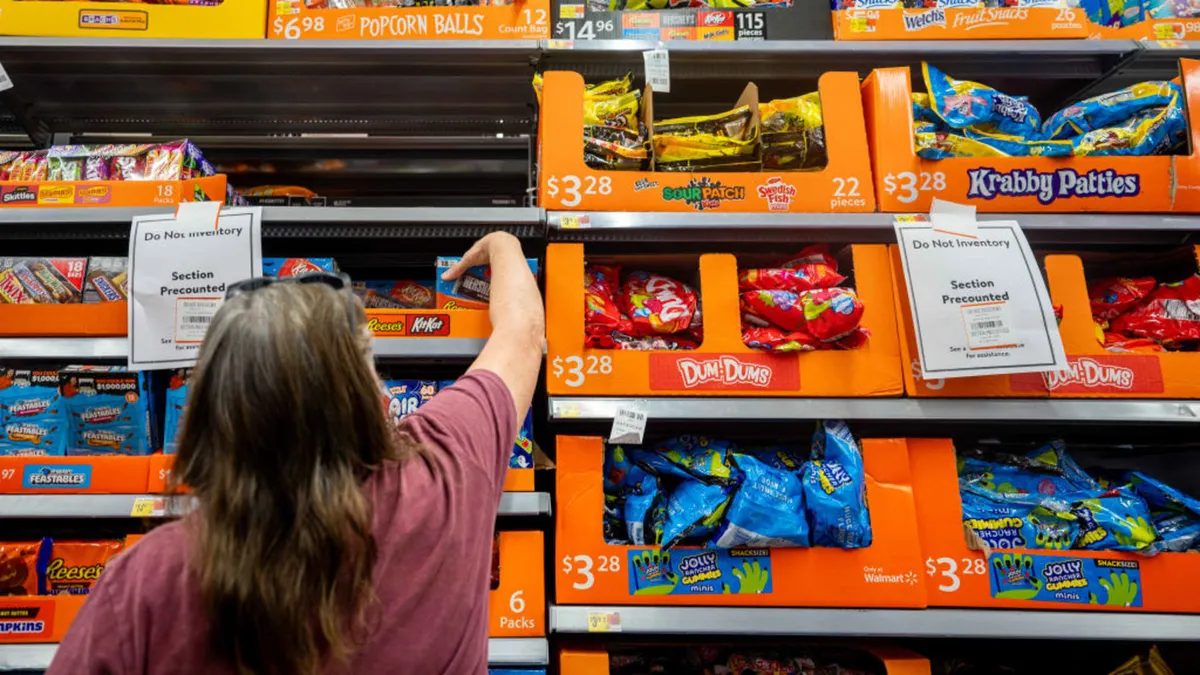
The scariest thing haunting Halloween this year isn’t a ghost, goblin, or ghoul — it's the price of chocolate. From iconic brands like Snickers and Reese's to Twix, one of America's favorite indulgences is becoming increasingly expensive. Factors such as tariffs, inflation, and high cocoa prices are squeezing profit margins and impacting consumers' budgets, which could lead to fewer chocolate bars landing in trick-or-treat buckets this Halloween.
According to research from Circana and the U.S. Bureau of Labor Statistics, chocolate prices have surged nearly 30% since last Halloween and an astounding 78% over the past five years. For instance, a 100-piece variety bag of candy now costs $16.39, rising from just $7.20 in 2020, as noted by FinanceBuzz. This spike is evident on store shelves, where variety packs from Hershey—maker of beloved products like Reese's, KitKats, and Heath bars—have increased by about 22%. Similarly, Mars, known for M&M's and Milky Way, has raised its prices by around 12%, as revealed by the Century Foundation, a progressive think tank, and the Groundwork Collaborative.
The Halloween season has started off slowly, as Hershey CEO Kirk Tanner mentioned during an earnings call, hinting that holiday sales may be softer this year. Surveys indicate that nearly 80% of Americans plan to purchase candy for Halloween, according to YouGov. This festive season accounts for about 18% of annual U.S. confectionery sales, second only to Christmas, as reported by the National Confectioners Association. However, chocolate's market dominance is waning; last year, it constituted 52% of Halloween candy sales, but that figure has dropped to 44% this year as shoppers turn to more affordable and trendy sweets.
Macroeconomic conditions are playing a significant role in this shift. Sally Wyatt from Circana attributes these changes to the compounded impact of rising prices, which have outpaced wage growth. As a result, consumers are making more deliberate choices regarding discretionary spending. Sector-wide, candy prices have outstripped the national inflation rate, marking a roughly 10% increase compared to last year, according to the Century Foundation.
Despite economic challenges, the National Retail Federation forecasts that 2025 will be a record year for candy sales in the U.S., with an anticipated $3.9 billion spent on Halloween candy alone. Even as consumers navigate higher food prices, they are still allocating budget space for chocolate and candy, indicating that this category remains robust and on an upward trajectory, according to Carly Schildhaus of the National Confectioners Association.
Much of the chocolate filling U.S. shelves this fall was produced from cocoa beans bought at record prices last December, when futures peaked over $12,000 per ton. Although prices have since cooled to around $6,000, this rate is still more than double the pre-pandemic average. A combination of rising temperatures, erratic rainfall, drought, and crop diseases over the past three years has severely impacted harvests in West Africa, which accounts for approximately 70% of the world's cocoa production. This has led to the largest global cocoa deficit in 60 years, with supply falling half a million tons short of demand.
Experts like David Branch from Wells Fargo Agri-Food Institute suggest that while prices may stabilize by next year due to improved crop yields, they are unlikely to decrease significantly. The rising costs are not solely attributed to cocoa; factors such as labor, transportation, fuel, and overhead expenses are contributing to the overall price increases. Hershey reported that tariff expenses would cost the company between $160 million and $170 million this year, and the company announced a low double-digit price hike in July, although executives clarified that these increases were not directly tied to tariffs or Halloween pricing.
As chocolate prices rise, alternative candies are gaining popularity. More than half of shoppers indicated a preference for gummy candies this Halloween, as reported by NielsenIQ. In the 12 weeks ending October 5, the price per pound of chocolate rose nearly 14%, while sales volumes fell by 6%. In contrast, non-chocolate Halloween candies like Jolly Ranchers and Skittles saw sales climb by 8.3% during the same period. Younger adults, particularly Gen Z, are driving growth in non-chocolate categories, favoring gummies, freeze-dried sweets, and TikTok-inspired flavor combinations.
In response to changing consumer preferences, chocolate manufacturers are innovating. Hershey has expanded its gummy lineup, including collaborations with celebrities like Shaquille O'Neal, and introduced ghost-shaped Twizzlers and unique Trickies Jolly Rancher gummies. Mondelez International, the maker of Cadbury and Toblerone, is also prioritizing gummies in the U.S. market. However, CEO Dirk Van de Put noted that the U.S. market is currently slower than it has been in a while. Manufacturers are exploring smaller bars, new fillings, and cocoa-free options such as crème or nut-based confections to counteract rising ingredient costs.
Despite the rising costs, consumers have not lost their appetite for chocolate. It remains an indulgence that many consider essential. As the industry adapts to economic pressures and changing consumer preferences, chocolate is expected to maintain its status as a beloved treat this Halloween and beyond.